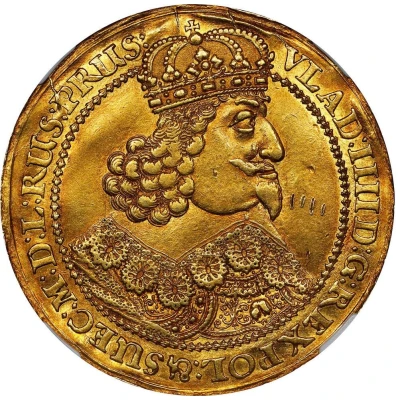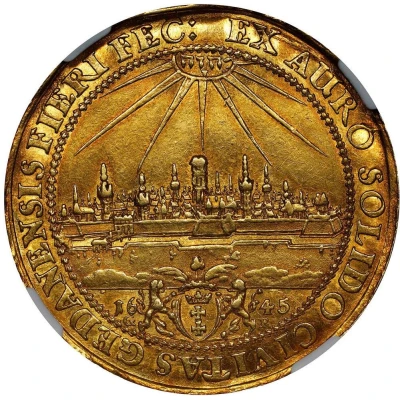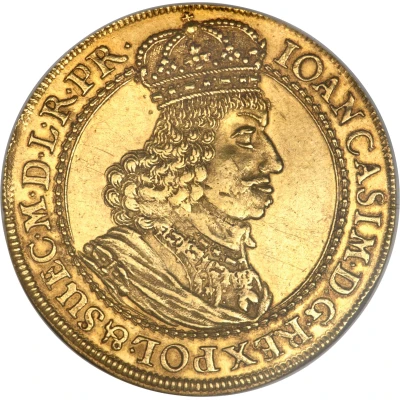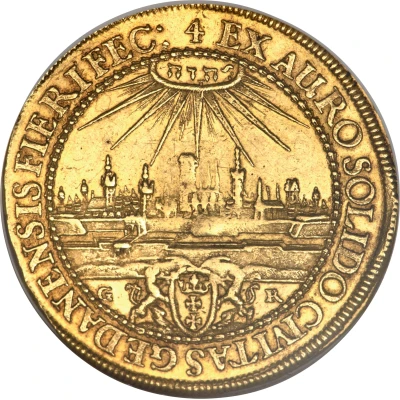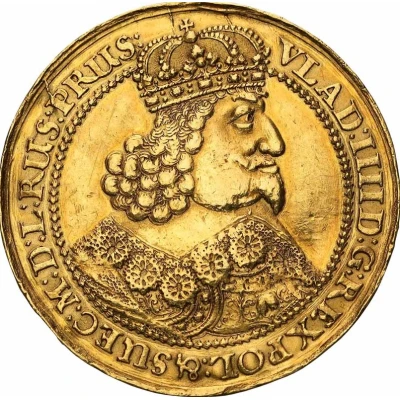
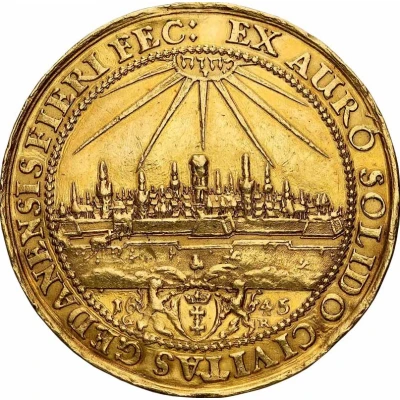

© Antykwariat Numizmatyczny - Michał Niemczyk
Czterodukat gdański - Władysław IV Waza Gdańsk
1645 year| Gold | 13.89 g | 37 mm |
| Issuer | Polish–Lithuanian Commonwealth |
|---|---|
| King | Władysław IV Vasa (1632-1648) |
| Type | Non-circulating coin |
| Year | 1645 |
| Value | 4 Ducats (4 Dukatów) |
| Currency | First Zloty (1573-1795) |
| Composition | Gold |
| Weight | 13.89 g |
| Diameter | 37 mm |
| Shape | Round |
| Orientation | Medal alignment ↑↑ |
| Demonetized | Yes |
| Updated | 2024-10-07 |
| Numista | N#96507 |
|---|---|
| Rarity index | 100% |
Reverse
Panorama of fortified Gdańsk with several identifiable structures: the main town hall; the churches of St. Mary and St. John; the city gates and fortifications. Below, oval escutcheon with Gdańsk coat of arms held by lions, topped with branches of palm and vine. On sides, date and initials of the Gerhard Rogge, leaseholder of the mint of Gdańsk from 1639 to 1656. At the top, Hebrew inscription with rays, symbolic of the divine protection over the city, which had managed to escape the Thirty Years' War unscathed.
Scripts: Hebrew, Latin
Lettering:
EX AURO SOLIDO CIVITAS GEDANENSIS FIERI FEC :
יהוה
1645
G R
Translation:
The city of Gdańsk was made of solid gold.
Jehovah
Comment
HCz-1851 (R2), cf. Gum-1607 (RR; this date unlisted), Chelminski-642, CNG-257, Dutkowski-266 (R5)."A Baroque masterpiece of Polish numismatics, this outstanding multiple Ducat "donative" issue represents the decision of the city council of Danzig to change the design of circulating coinage from the heraldic city arms to a detailed city panorama" (source: HA.com)
Interesting fact
One interesting fact about the Czterodukat gdański - Władysław IV Waza (Gdańsk) 1645 coin is that it features a unique blend of Polish and Lithuanian elements on its design. The obverse side of the coin depicts the Polish king, Władysław IV Waza, while the reverse side features the coat of arms of the city of Gdańsk, which was part of the Polish-Lithuanian Commonwealth at the time. This blend of national and local symbols reflects the complex political and cultural landscape of the region during the 17th century.
